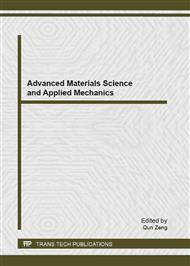p.172
p.176
p.181
p.186
p.191
p.197
p.202
p.207
p.213
New Preparation for Amorphous/Nanocrystalline Ni-Mo Alloys by Electrodeposition
Abstract:
The amorphous/nanocrystalline Ni-Mo alloys are obtained in alkaline nickel carbonate solution in this paper. By using X-ray diffraction (XRD) and scanning electronic microscopy (SEM) to testify microstructure and morphology of the deposits. It is found that the deposits are composed of amorphous and nanocrystalline structure phases. Compared with the nickel sulfate solution, the amorphous/nanocrystalline alloys are more accessible to be obtained in carbonate solution under the same conditions as the sulfate solution. The internal stress between the deposit and the basement is inexistent with the tiny granules and well-proportioned grains at the coating surface. The stability of the alkaline nickel carbonate solution is much better than the sulfate solution, and the deposit performance is relatively better and easy to be controlled.
Info:
Periodical:
Pages:
191-196
Citation:
Online since:
May 2013
Authors:
Price:
Сopyright:
© 2013 Trans Tech Publications Ltd. All Rights Reserved
Share:
Citation:


